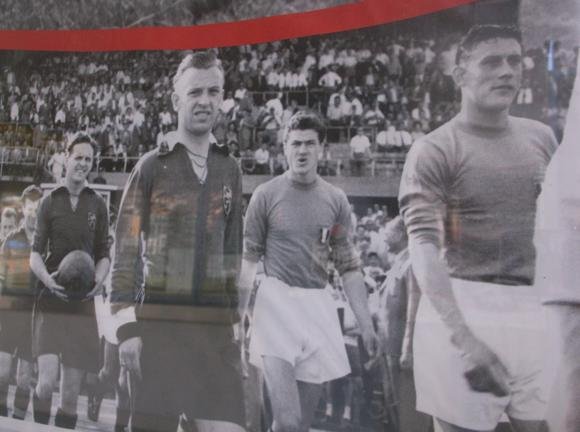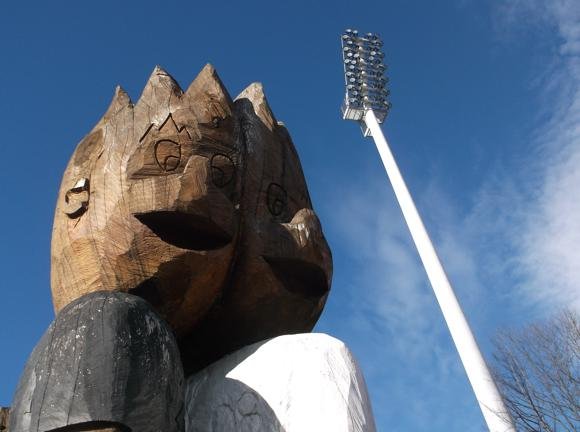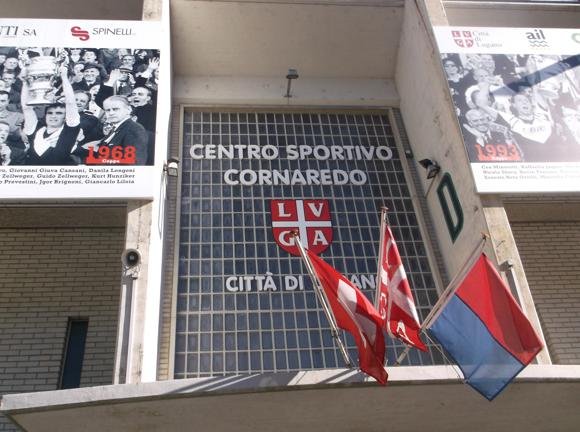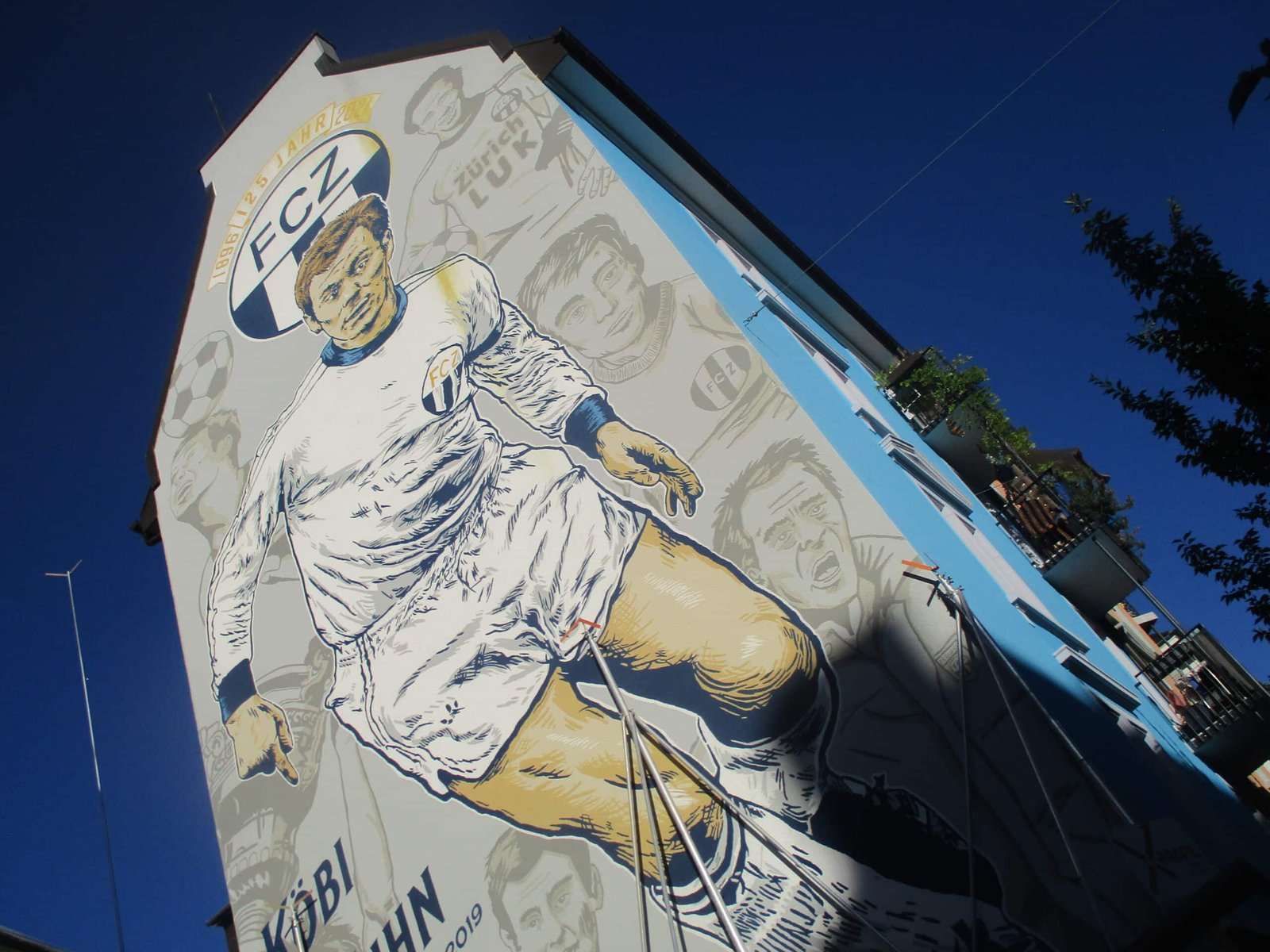A fan’s guide – the club from early doors to today
The biggest club in Ticino, the Italian-speaking region of Switzerland, FC Lugano are enjoying a modest revival after going out of business in 2003.
Swiss Cup finalists in 2016, the Bianconeri finished third in 2017 and went on to enjoy a decent run in the Europa League, a first taste of European football for 15 years. Now former Switzerland under-21 coach Pierluigi Tami has his work cut out trying to prevent Lugano from falling back into the Challenge League.
Only promoted in 2015, Lugano had last competed in the top tier in 2002.
It was in the heyday of football in Ticino that the Bianconeri last won the Swiss title in 1949. Back then, as Lugano prepared for the 1954 World Cup by opening the Stadio Cornaredo, FCL’s regional rivals Bellinzona and Chiasso were also major challengers for the league crown.

FC Lugano had been formed in 1908 and played their first match, against Chiasso, at the Campo Marzio that year. Based at the same ground until the Cornaredo opened in 1951, Lugano entered the Swiss Serie A in 1922.
A first trophy came in 1931, a Swiss Cup win over Grasshoppers at the Campo Marzio, prefacing what would be a golden two decades in the club’s history. From 1933 to 1949, Lugano rarely finished outside the top three, winning three titles and finishing runners-up three times.
Top goalscorers, Lugano-born Lauro Amadò and Swiss-Colombian Alessandro Frigerio, a former youth player at Liverpool, won more than 60 Swiss caps between them. Amadò played in Switzerland’s famous 4-2 win over Nazi Germany at the 1938 World Cup finals, with Frigerio in the squad.

After the move to the Cornaredo, Lugano’s form dipped and the club was relegated in 1953. In subsequent decades, the Bianconeri yo-yo’d between the top two tiers, winning the Swiss Cup in 1968 and 1993.
The early 1990s, in fact, saw a mini-revival, Lugano beating modest opposition in Europe before falling to Real Madrid. Two seasons later, in a local derby, the Bianconeri overcame Internazionale. A late goal by Edo Carrasco at the San Siro provoked wild celebrations an hour away in Lugano – though former Inter star Igor Shalimov, on loan at the Swiss side, had much to do with the famous victory.
An early red card helped Slavia Prague, Šmicer, Poborsky and all, beat Lugano 2-1 in the next round, a late Shalimov goal not enough to take to the Czech capital.
Lugano continued challenging for European glory, a runners-up spot in 2001 opening the door to the Champions League. It was then everything fell apart. First, Lugano were tonked 3-0 at Shakhtar Donetsk, excluding the Ticinese from group-stage riches.

Months later, club president and lawyer Helios Jermini was found dead in his car that had been submerged in Lake Ceresio. Further investigation revealed debts of SF72 million hidden away from prying eyes.
Despite finishing in third place in 2001-02, the club was forcibly relegated. The following spring, in the middle of the play-off stage for promotion back to the top flight, FC Lugano were declared bankrupt.
A new club, AC Lugano, was created, formed of under-21 players competing in the lower rungs of the regional league. ACL were not even allowed to compete in the Swiss Cup.
In June 2004, they merged with nearby FC Malcantone Agno in a crude but successful attempt to gain second-flight status in the Challenge League. This new club duly became FC Lugano, again, in 2008.

Renamed and buoyant once more, Lugano made the promotional play-offs two seasons running. In 2009, FCL lost out to Luzern then, a year later, to a 91st-minute goal at eternal rivals Bellinzona.
Success at last came in 2015, thanks to goals and assists from Croat Marko Bašić and a cast-iron defence. Bizarrely, with promotion achieved, previously astute club president Angelo Renzetti then hired Zdenek Zeman of 4-3-3 persuasion. Lugano shipped 75 goals in 35 games but, in front of 6,000-plus at the Cornaredo, Zeman’s attacking tactic paid off in the last, decisive match against St Gallen. Lugano’s 3-0 win over St Gallen also condemned FC Zürich to the second-flight Challenge League – four days later, FCZ gained revenge of sorts with a 1-0 win over the Ticinese.
The wily Czech leaving days after Lugano’s cup-final defeat to FC Zürich, inexperienced coach Andrea Manzo stepped in for the 2016-17 campaign. Led by long-term captain Antoine Rey, Lugano performed solidly in the Super League, goals coming from Macedonian international Ezgjan Alioski.





Stadium Guide
The field of dreams – and the stands around it




As elegant today as when it was opened in 1951, the Stadio Cornaredo is one of those classic Swiss stadiums backdropped by dramatic hillsides and under seemingly permanent bright blue skies.
Though the stadium’s complete overhaul mooted in the late 1990s was shelved after the corruption scandal and FC Lugano’s demise in 2003, a new plan, outlined in 2015, calls for a 12,000-capacity sports palace with offices and commercial outlets.
This may make good business sense but aesthetically, it would be a huge shame.
Approved in 1942, built in 1950, the Cornaredo opened with a friendly between Lugano and local rivals Chiasso and attracted a near full house of 32,500 weeks later for an international between Switzerland and Italy.

Italy were also the main draw when Lugano hosted a single match at the 1954 World Cup, a 4-1 win over Belgium. Switzerland have since played there half-a-dozen times without defeat, most recently against Moldova in June 2016.
Crowds have dropped dramatically since the 1950s but the graceful main stand, the Tribuna Centrale, remains, on via Trevano that runs from town. Opposite, the Tribuna Monte Brè opened in 1980 and holds almost half the current 6,330 capacity.
Significant improvements were approved after promotion to the Super League in 2015, which reduced the capacity from its previous 10,500.
Each end is open, home ultras gathered in the Curva Nord, up to 800 away fans in the Curva Sud.

The stadium centrepieces a sports complex that includes a skating arena, a skatepark and a hockey pitch of synthetic grass – footballers play on natural turf, surrounded by a running track.
The Luganese are proud of their stadium and its history. A running mural of black-and-white photos decorates each of the two stands, depicting the 1954 World Cup, the visits of Zico, Real Madrid and Internazionale, and recent if scant successes.
Note that the Stadio Cornaredo also hosts Rapid Lugano matches – supporters have their own bar behind the Curva Sud.
getting there
Going to the stadium – tips and timings


Several buses run from the city centre to the stadium – it’s just that bit too far to walk.
From Lugano station, line 4 (Mon-Fri every 15mins, Sat, Sun every 30mins) takes nine stops/9min to reach the stadium – the 6 (every 30mins, not Sun) goes by a different route (eight stops/12min).
For the visit of bigger clubs, security measures are put in place for this station-stadium service and regular buses don’t run from about 90min before kick-off.
Buses should still run from town. From Lugano Centro, on via Pestalozzi near the Hotel Zurigo Garni, the 7 (every 10-15mins) takes eight stops/9min to reach the stadium. The 3 (every 10-15mins) also sets off from via Pestalozzi but runs along the waterfront, ideal for a picturesque ride to the stadium 15 stops (16mins) away.
Nearly all lines run until after 11pm.
getting in
Buying tickets – when, where, how and how much

Tickets are sold from the club office (Mon-Fri 9am-noon, 2pm-5pm) at the stadium or via national agency ticketcorner who distribute online and at its many outlets (the Coop City supermarket at via Nassa 22, post offices and the train station).
Ticketcorner add a modest agency charge.
On match days, tickets are sold at the kiosks behind each goal.
The cheapest seats (SF25) are in the Spalti, the areas either side of the central seats in the main stand as far as the home and away sectors behind each goal. Here under-14s are charged SF10, under-6s admitted free.
Opposite the main stand, a seat in the Tribuna Monte Brè is SF40, under-14s SF15, under-6s free. The main stand is divided into the Tribuna Laterale (settore 1 & 4, SF65) and Centrale (settore 2 & 3, SF80).
what to buy
Shirts, kits, merchandise and gifts

The main outlet is the Lugano Store, more a kiosk, behind the Tribuna Monte Brè, only open on match days. FCL shirts with the cool V across the chest come in black, white and red versions and there are also the standard frilly pennants, scarves and keyrings.
Look out for the little metal tins of mints and chewy sweets, and the badges in the shape of the Italo-Swiss region, ‘Ticino Bianconero’ – all displaying the signature V and in black-and-white, of course.
Where to Drink
Pre-match beers for fans and casual visitors


The stadium’s longevity means that the many bars and restaurants on the way up to it from town have long been in place.
In close proximity, behind the home Curva Nord, the Pizzeria Resega (via Sanvico 1) has been in the Albieri family for decades. A lovely little tavern run by an equally affable old landlord, it offers wood-fired pizzas inside, red-and-white checked tables outside and Feldschlösschen beer. The stadium is directly opposite.
Behind the Curva Sud, the Buvette Rapid is a small, basic bar with a terrace overlooking the adjoining training pitch. There’s also a Buvette Monte Brè on match days, behind the stand of the same name, serving local Luganighetta spiral sausages, bratwurst and cervelat Swiss sausage, all SF8. Beer is SF4.




The main venues are the Osteria Bianconero and adjoining Bar Lugano behind the main stand on the Curva Nord side, nearest the cinema. The restaurant also operates during the week until early evening, with a lunch menu.
For match days, you’re best reserving via ristorazione@fclugano.ch. The bar serves Calanda beer from Chur, its small interior packed on match days – it occasionally opens during the week if there has been a training session or press conference.














